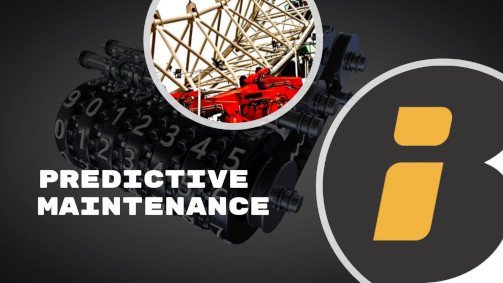Predictive maintenance is a popular application of predictive analytics that can help businesses in several industries achieve high asset utilization and savings in operational costs.
Critical assets, such as industrial machines, elevators, or vehicles, need to be running at peak utilization to realize their return on investments and decrease lost revenue due to downtime. For maintenance of these assets, most businesses rely on either corrective maintenance, where parts are replaced when they fail, preventive maintenance, where they determine the useful lifespan for a part, and maintain or replace it before a failure, or a combination of both.
Why Use Predictive Maintenance?
The goal of predictive maintenance is to optimize the balance between corrective and preventative maintenance, by enabling just-in-time replacement of components. This approach aims to reduce the operational risk of mission-critical equipment and to increase the rate of return on assets by predicting failures before they occur. Predictive maintenance usually involves the deployment of sensor-based diagnostic monitoring in real-time such as remote sensors, edge computing, and IoT platforms.
How do I Implement Predictive Maintenance?
Predictive maintenance can be implemented in a few different ways depending on the situation. You can use binary classification to predict the probability that a piece of equipment fails within a future time period. The model, when trained, should identify each new example of the data, for example, mean vibration of a part throughout the day, as that parts likelihood to fail or work normally within a future time period. Regression models can also be used for predictive maintenance and are instead used to compute the remaining useful life of an asset. The model should calculate the remaining useful life of each new example as a continuous number that denotes the period of time remaining before the failure. Multi-class classification techniques are also useful in some cases, for example, to predict the most likely root cause of a given failure.
The choice of method depends on the business case and on the data available. For example in regression, assets without any examples of failures in the data cannot be used for modeling since labeling is done with reference to a failure point.

might be used in combination with AI to predict the remaining useful life of the wheel. It’s an end-to-end solution that includes data ingestion, data storage, data processing, and advanced analytics. This example uses multiple Azure services including Azure Stream Analytics to analyze the data to provide near real-time analytics on the input stream from the Event Hub, HDInsight is used to run Hive scripts to provide aggregations on the raw events, and Azure Machine Learning to make predictions on the remaining useful life to be displayed in Power BI. Azure Data Factory is used for orchestration, scheduling, and monitoring.
Conclusion
Predictive maintenance can help businesses in several industries achieve high asset utilization and savings in operational costs by enabling just-in-time replacement of components by predicting failures before they occur. Binary classification, regression models, or multi-class classification techniques can be used. The choice of method depends on the business case and on the data available. There exist many services that make the machine learning process easy and integrated, for example, Azure machine learning.
Contact us if you want to know more!





